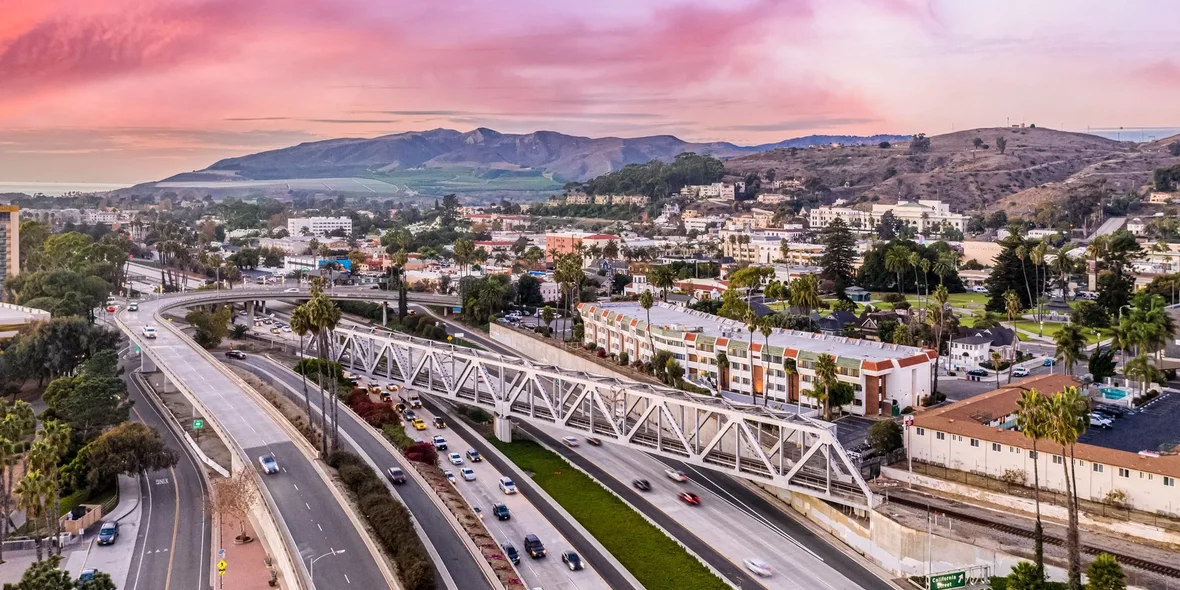
How to Get a Job in the United States
The U.S. labor market is one of the most attractive in the world due to various factors, including high hourly wages and a generally high employment rate. It’s also home to the headquarters of many global corporations, such as Amazon, Apple, and Tesla.
However, despite the vast opportunities, breaking into the U.S. job market is not easy. Employers prioritize highly skilled professionals, and the U.S. government facilitates this by offering streamlined visa processes for qualified experts. In this article, we’ll explore how to find a job in the USA and what it takes to succeed.
Pros and Cons of Working in the U.S.
While the U.S. labor market is appealing, it is far from perfect. It offers diverse employment formats — traditional office work, hybrid and remote roles, freelance and contract positions. Still, these advantages come with trade-offs.
Pros of working in the USA:
- High salaries. The average median income in the US is $60,000, but in skilled sectors it is significantly higher. Many companies also offer bonuses of 10–30% of the base salary.
- Leadership in innovation. Due to the country’s advanced technological infrastructure, employees can participate in cutting-edge projects in AI, biotechnology, green energy, and healthcare.
- Career growth and training. According to LinkedIn, 65% of U.S. employers are willing to sponsor professional development for their employees.
- Employee benefits. Employers often provide health insurance, paid vacation, dental coverage, and additional perks such as free meals, gym memberships, and relocation assistance.
Cons of getting a job in the U.S.:
- High competition. On average, 120–150 resumes are submitted for a single IT opening. International professionals compete not only with locals but with a global talent pool. For example, in 2023, Apple received up to 1,000 applications per developer position.
- Visa Constraints. A job offer from a sponsoring employer is usually required to obtain a work visa. This ties the employee to the employer; if the worker is laid off, they lose visa status and must leave the country.
- High Cost of Living. In major cities, living expenses are 40–80% above the national average. Renting a one-bedroom apartment in San Francisco costs $3000—$4000/month, in New York, $2500—$3500. Additionally, every state has its own policy related to state salary tax in America. More affordable states offer cheaper rent but also lower wages.
- Cultural and language barriers. U.S. business culture values directness, confidence, and self-promotion. Modesty is often perceived as a lack of competence or self-confidence. English proficiency at the B2/C1 level (IELTS 7.0+) is essential. Accents are acceptable, but poor enunciation may reduce job prospects.
- Limited social guarantees. There is no federally mandated paid maternity leave — only 12 weeks of unpaid leave under FMLA. The average paid vacation is 10–15 days annually, far less than in Europe. Health insurance is employer-based and usually ends when employment ends.
In-Demand Professions in the U.S. Labor Market
According to the U.S. Bureau of Labor Statistics, by the end of 2024, approximately 2.7 million new jobs were created across the country, with a significant share concentrated in technology, healthcare, and professional services. Major companies like Google continue to expand hiring, including for remote jobs in America, although competition remains intense, sometimes reaching hundreds of applicants per opening.
The healthcare system consistently faces staffing shortages, especially given the growing population that requires medical services. The sector is in ongoing need of qualified nurses, physicians, and administrative personnel.
Regional differences strongly influence employment trends. Silicon Valley (California) remains a hub for IT and startups, though the cost of living there is about 50% higher than the U.S. average. New York leads in finance and media, while Texas, particularly Austin and Houston, is increasingly attractive due to low taxes. Both Tesla and Oracle relocated their headquarters to Texas, resulting in an 8–12% increase in regional IT job openings.
Popular job positions in the U.S.:
- Software engineer (specializing in Python, Java, Go).
- Cybersecurity specialist.
- Data scientist.
- Cloud solutions architect (AWS, Azure, Google Cloud).
- IoT developer.
- Electrical engineer.
- Renewable energy engineer.
- Robotics engineer.
- Registered nurse (patient care, procedural administration, remote consultations).
- Specialist physicians (anesthesiology, surgery, internal medicine).
- Health informatics specialist.
- Genetic counselor.
- Financial analyst.
- Digital transformation specialist.
- Venture capital manager.
- Hospitality manager (hotels, resorts, restaurants).
- Event manager.
- Marketing analyst.
- E-commerce & marketplace specialist.
- University lecturer/instructor.
- Research scientist.
- Civil engineer.
- Construction project manager.
Popular job vacancies in the United States of America for foreigners:
- Retail sales associate.
- Office administrator.
- Restaurant staff.
- Equipment maintenance technician.
- Teaching assistant.
- Manufacturing worker.
- Logistics manager.
- Call center representative.
Highest-paid jobs USA include:
- Specialist physician.
- Software engineer at FAANG (Facebook, Amazon, Apple, Netflix, Google).
- Investment banker.
- Corporate lawyer.
- Chief executive officer (CEO).
Work Visas in the United States
U.S. work visas are divided into non-immigrant (temporary stay) and immigrant visas. Non-immigrant visas function as temporary permits, while immigrant visas have no fixed duration and are intended for obtaining a green card.
Types of employment visa in the USA:
|
Visa Type |
Description |
Requirements |
Validity period |
|
H-1B |
America H1b visa for skilled professionals (programmers, engineers, scientists, architects with a bachelor’s degree or equivalent). |
Employment contract, proof of qualifications, and Labor Condition Application (LCA) from the U.S. Department of Labor. |
Up to 3 years, extendable to 6 years. Possible transition to green card via EB-2/EB-3. |
|
O-1 |
Visa for individuals with extraordinary ability (scientists, athletes, artists, internationally recognized businesspeople). |
Petition I-129 by employer or agent, evidence of achievements (meeting at least 3 of 10 USCIS criteria). |
Up to 3 years, with unlimited 1-year extensions. |
|
TN |
NAFTA visa for Canadian and Mexican citizens (engineers, scientists, and teachers). |
Job offer letter, proof of qualifications, no intent to immigrate. |
Up to 3 years, renewable. |
|
J-1 |
Work and travel USA visa for internships, research, and teaching programs. |
Sponsoring program, invitation letter, Form DS-2019. |
From several months up to 5 years. |
|
L-1 |
America L1 visa for executives (L-1A) and specialists (L-1B) working in international companies with a U.S. branch operating for at least 1 year. |
Petition I-129, employment contract, job description of U.S. role after transfer. |
Up to 7 years (L-1A), or 5 years (L-1B). |
|
EB-2 |
Immigrant visa through employment for professionals with a master’s degree or bachelor’s plus 5+ years of progressive experience. |
Labor Certification (PERM) from the Department of Labor, Petition I-140, employment contract. |
Employment-based visa leading to a green card; wait time ranges from 6 months to 2 years. |
|
EB-3 |
Immigrant visa for skilled workers (2+ years experience), professionals with a bachelor’s degree, or unskilled workers. |
To obtain a work visa for the USA, a sponsoring employer is required. The employer must file the appropriate petition (I-129 for non-immigrant visas, I-140 for immigrant visas) with the U.S. Citizenship and Immigration Services (USCIS).
Minimum document package required for all U.S. work visas
- Valid passport (with at least 6 months of validity beyond the date of entry)
- Completed DS-160 form (confirmation page with barcode)
- Photograph 5×5 cm (taken within the last 6 months)
- Receipt of payment for the consular fee ($160—$205)
- Petition I-129 or I-140 (for H-1B, O-1, L-1, EB-2/EB-3) or Form DS-2019 (for J-1 visa)
Additional documents by visa type:
- H-1B. Diploma, resume, job offer in the USA for foreigners, Labor Condition Application (LCA), employer’s letter
- O-1. Publications, awards, 6–10 recommendation letters from experts, contract with employer or agent
- TN. Employer letter, diploma, proof of experience
- J-1. Invitation from sponsor, Form DS-2019, proof of funding
- L-1. Employment records at foreign company, company organizational structure, description of U.S. role
- EB-2/EB-3. PERM certification, diploma, employment contract, proof of experience (recommendations, work record)
Most foreigners must obtain an Employment Authorization Document (EAD). It is an American work permit that confirms the holder’s legal right to work regardless of employer.
EAD is required for:
- Legal employment. Employers must verify work authorization and cannot officially hire foreign nationals without it, except when automatic authorization is granted with certain work visas.
- Obtaining a social security number (SSN). EAD holders can apply for an SSN, which is essential for tax payments and opening bank accounts.
- Proof of status. EAD serves as evidence of legal presence in the U.S., important during immigration checks.
Automatic work authorization applies to:
- U.S. citizens.
- Permanent residents (Green Card holders).
- Holders of America work permit visas such as H-1B, L-1, O, P.
- Refugees and individuals with approved asylum status.
Additional types of work permits in the USA:
- Seasonal work visas (H-2A and H-2B). Work in the USA for foreigners is available through seasonal work visas H-2A (agricultural work) and H-2B (non-agricultural seasonal jobs), but only in industries experiencing a shortage of local labor. When filing a petition with the Department of Labor, the employer must prove that no qualified U.S. workers are available for the positions and must provide housing, transportation to the work site, partial meals, and pay the legally required prevailing wage. These visas can be extended for up to three years.
- Work through study (American F-1 visa). Students on an F-1 visa have limited but legal authorization to work. During their studies, they are allowed to work up to 20 hours per week on campus. After completing their first academic year, they become eligible for Curricular Practical Training (CPT) and Optional Practical Training (OPT) programs, which allow them to work in a field related to their major. OPT permits up to 12 months of full-time employment, and graduates of STEM programs (Science, Technology, Engineering, Mathematics) can apply for a 24-month extension, for a total of 36 months of work authorization.
Job Search in the USA
Before getting a job in the U.S., one must first find a suitable employer. However, not all employers are willing to sponsor foreign workers for a visa. This is especially true for job openings at small companies — many of them do not even consider candidates without a valid work visa.
The primary tool for job searching among foreigners is online platforms. The most popular platform is LinkedIn, along with Facebook groups. Approximately 60% of job positions in the U.S. are filled through referrals made at professional conferences or online events.
As a last resort, one can contact recruitment agencies in the USA for foreigners. For IT specialists, recommended agencies include Robert Half and Teksystems. For job seekers without a college degree — Manpower.
Specialized job listings, such as those targeting Russian-speaking candidates, can often be found through local communities. Platforms like BAZAR.club offer job opportunities from Russian-speaking employers (nannies, drivers, construction workers).
General employment sites in the USA:
|
Platform |
Description |
Popular categories |
|
Indeed |
The largest platform with 250 million users and 2 million job listings monthly. |
IT, healthcare, retail, logistics. |
|
|
Social network with 1 billion users; 40% of listings are for skilled roles. Provide opportunities to find work in America for foreigners. |
IT, finance, marketing, engineering. |
|
Monster |
Over 1 million listings, ranging from part-time to executive positions. |
Service, IT, manufacturing, healthcare. |
|
Glassdoor |
One of the best job-seeking sites in the USA, with 1.5 million listings, company reviews, and salary insights. |
IT, finance, healthcare, retail. |
|
BAZAR.club |
Russian-language platform for migrants, 100,000+ job listings. |
Nannies, drivers, construction, restaurants. |
|
Layboard.com |
Global platform offering jobs for unskilled roles. |
Warehousing, construction, agriculture. |
|
SimplyHired |
500,000+ listings, from janitorial roles to managerial positions. |
Service, retail, manufacturing. |
|
USAJobs.gov |
Federal portal with 30,000+ government sector openings. But there is a lack of remote work in the US. |
Government, education, healthcare. |
Salary Levels in the United States
Salaries in the U.S. vary based on profession, industry, experience, education, and geographic location. According to the U.S. Bureau of Labor Statistics, as of the end of 2024, the average salary in the U.S. is $66,622, while the median salary is approximately $60,000.
Average Americans salary by profession:
|
Profession |
Average salary (USD/year) |
|
Software Developer |
$127,260 |
|
Cybersecurity Specialist |
$112,000 |
|
Data Analyst |
$85,000 |
|
Cloud Solutions Architect |
$146,000 |
|
IoT Developer |
$115,000 |
|
Physician |
$239,200 |
|
Genetic Counselor |
$89,990 |
|
Health Informatics Specialist |
$100,000 |
|
Electrical Engineer |
$103,320 |
|
Renewable Energy Engineer |
$110,000 |
|
Civil Engineer |
$95,300 |
|
Financial Analyst |
$102,660 |
|
Digital Transformation Specialist |
$110,000 |
|
Venture Capital Manager |
$150,000 |
|
High School Teacher |
$73,800 |
|
Teaching Assistant |
$38,000 |
|
Truck Driver |
$49,920 |
|
Logistics Manager |
$65,000 |
The federal minimum wage in America is set at $7.25/hour, but individual states have the authority to establish their own rates. Several states have set significantly higher minimum salary in America:
|
State |
Minimum wage (USD/hour) |
|
California |
$16.00 |
|
Washington |
$16.28 |
|
New York |
$16.00 in NYC, $15.00 statewide |
|
Massachusetts |
$15.00 |
|
Colorado |
$14.42 |
|
Florida |
$13.00 |
|
Seattle |
$19.97 |
|
Emeryville |
$18.67 |
|
San Francisco |
$18.07 |
States with the highest average salaries:
|
State |
Avg. salary (USD/year) |
Median salary (USD/year) |
Cost of living index (Numbeo) |
|
Washington, D.C. |
$96,873 |
$112,268 |
180 |
|
Massachusetts |
$86,840 |
$82,475 |
146 |
|
Washington |
$85,748 |
$80,000 |
135 |
|
California |
$80,330 |
$75,000 |
140 |
|
New York |
$78,000 |
$74,000 |
165 |
States with the lowest average salaries:
|
State |
Avg. salary (USD/year) |
Median salary (USD/year) |
Cost of living index (Numbeo) |
|
Mississippi |
$47,570 |
$48,204 |
87 |
|
Arkansas |
$53,716 |
$50,000 |
90 |
|
South Dakota |
$53,820 |
$52,000 |
95 |
|
Idaho |
$53,976 |
$52,500 |
100 |
|
Oklahoma |
$54,000 |
$51,000 |
89 |
Taxes in the United States
Taxes in the United States are collected at three levels: federal, state, and local. Federal taxes are uniform nationwide, but individual states can impose additional levies such as sales tax or property tax. For example, the California state income tax in America reaches 13.3%, in New York — 10.9%, and in New Jersey — 10.75%. However, there is no state income tax in Florida, Nevada, South Dakota, Texas, Tennessee, or Wyoming. Still, the federal income tax applies in all cases.
The federal personal tax in the USA is based on personal earnings and it follows a progressive scale:
|
Income (single filers) |
Rate |
Income (married filing jointly) |
Rate |
|
$0–11,925 |
10% |
$0–23,850 |
10% |
|
$11,926–48,475 |
12% |
$23,851–96,950 |
12% |
|
$48,476–103,350 |
22% |
$96,951–206,700 |
22% |
|
$103,351–197,300 |
24% |
$206,701–394,600 |
24% |
|
$197,301–250,525 |
32% |
$394,601–501,050 |
32% |
|
$250,526–326,050 |
35% |
$501,051–652,100 |
35% |
|
$326,051+ |
37% |
$652,101+ |
37% |
Thus, the federal income tax alone takes between 10% and 37% of earnings, depending on income. Additionally, 6.2% is withheld for Social Security and 1.45% for Medicare. On average, American earnings of $75,000, total deductions may appear to be around 30%.
These numbers are high, but not entirely accurate due to the complexity of the U.S. tax system. Crucially, every taxpayer can reduce their taxable income using the standard deduction, which in 2025 is approximately $15,000 for single filers.
For instance, with an income of $75,000, the taxable portion becomes $75,000 — $15,000 = $60,000. The federal income tax rate in the USA is then calculated progressively: the first $11,925 is taxed at 10%, the next portion up to $48,475 at 12%, and only the amount above $48,475 is taxed at 22%. As a result, the effective tax rate — the actual percentage of total income paid in taxes — is about 10–11%, not 22%. After adding Social Security and Medicare, the total effective burden is around 18–20%, not 30%.
This is why many states attract migrants with zero state income tax in the United States — state-level taxes can account for a third of the total tax burden. In high-tax states like California (13.3%), they can reach up to half of all taxes paid.
Frequently Asked Questions About Employment in the U.S.
How much does a U.S. work visa cost?
The cost depends on the type of visa. For example, for the popular United States work visa H-1B, the employer pays around $460 to file the petition (Form I-129), plus additional fees: $600 for the asylum program, $500 for anti-fraud (for L visas), and $2,500 if premium processing is requested. There's also a consular fee ($190–$300) and possibly a reciprocity fee (depending on the applicant’s country). In total, the cost ranges from $700 to several thousand dollars, and employers typically cover these costs. Legal services (attorney fees) can add another $1,000–$5,000.
How to obtain work authorization in the U.S.?
To work legally in the U.S., you need either a work visa (e.g., H-1B, L-1, TN) or an Employment Authorization Document (EAD). First, you must find an employer willing to sponsor your visa, as they are the ones who must file a petition with USCIS. For H-1B or H-2 visas, a Labor Condition Application (LCA) approved by the Department of Labor is also required. Once the petition is approved, you apply for the visa at a U.S. consulate using Form DS-160 and attend an interview. If you're already in the U.S. on another visa, you may apply for an EAD using Form I-765.
Where to look for jobs in the U.S.?
You can search for jobs through platforms like Indeed, LinkedIn, Monster, or Glassdoor, as well as specialized USA job sites for foreign applicants such as USponsorMe. Visiting the career pages of major companies directly is also effective. Professional networking via LinkedIn or industry-specific communities, job fairs, and recruitment agencies can also be valuable.
What are the top best-paying jobs in the U.S.?
The highest-paid professions are typically in tech, medicine, and finance. The top highest paying jobs in the USA include:
- Physicians (anesthesiologists, surgeons): $200,000–$400,000+ per year.
- IT professionals (software engineers, data scientists): $120,000–$200,000.
- Financial managers and investment bankers: $150,000–$300,000.
- Attorneys at large law firms: $150,000–$250,000.
Author
I write informative articles about real estate, investments, job opportunities, taxes, etc.




















